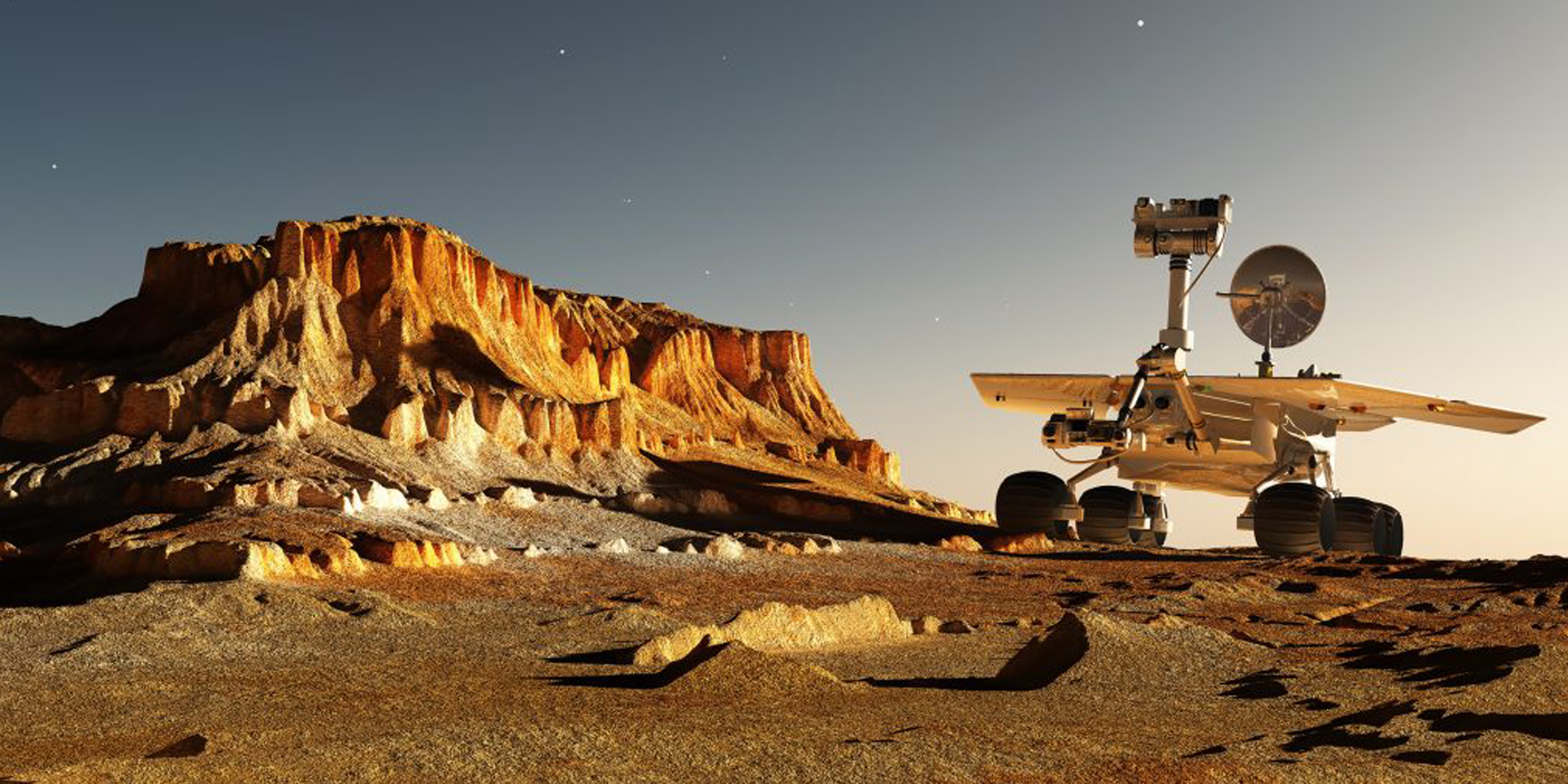
RAV.E | A Planet Full of Robots
What has seventeen eyes, is the size of a Mini Cooper, sings Happy Birthday to itself, and takes fourteen minutes to contact home? It’s the Curiosity rover on Mars, and it shares a lot of traits with Autonomous Underwater Vehicles. (OK, Curiosity doesn’t have any eyes, but it does have 17 cameras.)
If you didn’t already know, there is a planet in our solar system that is entirely populated by robots. The good news is that they are probably not planning an uprising or invasion of our planet because scientists here still control them.

…for now
Real Robots of Planet Mars
But seriously, of course we’re talking about Mars and the robotic missions that are currently running and have been for years. Right now there are six orbiters surveying Mars, like the MRO, or the Mars Reconnaissance Orbiter, Mars Express and Mars Odyssey missions. You might not think of satellites as being robotic explorers, but they work in much the same way that our Autonomous Underwater Vehicles, the AUVs that we talked about in the last lesson. Much like an AUV, these orbiters are programmed to perform certain missions like testing the Martian atmosphere, and they can run those missions on their own with just supervision from mission control here on Earth, because unlike ROVs (Remotely Operated Vehicles) that we sometimes use around the Hab, direct control of these robotic explorers would be completely impossible.
Why? Mars is very far away – at its closest, Mars is about 54 million kilometres away – so it takes a while for radio signals to get there and back; usually about 15 to 18 minutes one way. Obviously, if something went wrong with the mission no one would know until it was far too late to do anything about it. Imagine going down the street in a car and seeing a broken bottle in the road. Now imagine that it took fifteen minutes to get the car to swerve. Result? You are fourteen minutes and fifty seconds down the road, driving on flat tires before the wheel turns. As you can see, it’s very important to use sophisticated robotic explorers that can handle themselves.
The Rovers
The more well-known missions currently running on Mars, Curiosity and Opportunity, are rovers, which means that they cruise around on the surface conducting experiments and exploring the actual terrain on the ground. And like the AUV survey missions that we perform from the Hab, one of their primary missions is determining the habitability of Mars by conducting soil analysis, among other scientific research. But since Mars is so far away, it’s a lot easier to conduct those analogue missions that we’ve discussed in other lessons. While it’s a much different environment in the ocean than on the surface of Mars, it gives future astronauts and mission commanders a good way to practice without having to spend billions of dollars sending something millions of kilometres only to find out that they needed a bit more training.
Another really good reason to train here on earth is that getting to Mars is incredibly difficult – in fact, only nineteen of the forty-seven missions to Mars have actually succeeded, all at tremendous cost every time.

Why Bother?
So why spend all of that time and money and resources on missions that are statistically doomed to failure? For the same reason that we do any scientific research – because the benefits of the successes far outweigh the pain of the failures. In fact, in a lot of ways, that’s how science works. You start with a theory – I think that this should work this way – and you conduct a series of experiments to test that theory. Sometimes you’re proven right, but often times you find that your theory was wrong and you learn something entirely new and unexpected.
And sometimes, those experiments can be incredibly dangerous, but they can change the world.
Curriculum Reference Links
- Earth and Space / Sustainability / 8: Students should be able to examine some of the current hazards and benefits of space exploration and discuss the future role and implications of space exploration in society




